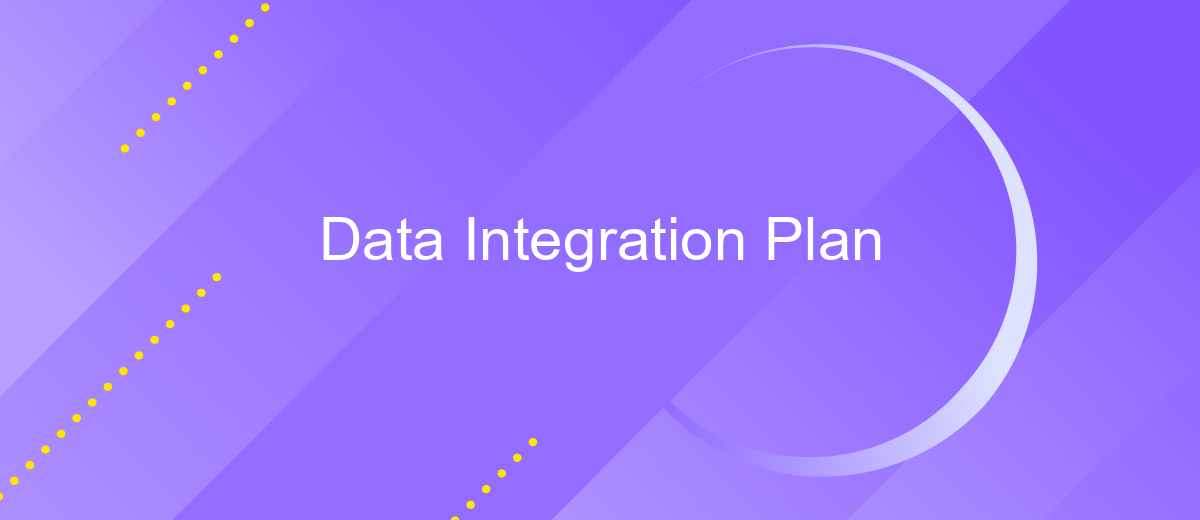Data Integration Plan
Creating an effective Data Integration Plan is crucial for organizations aiming to streamline their data management processes. This plan outlines the strategies and methodologies for consolidating data from various sources into a unified system. By ensuring data consistency, accuracy, and accessibility, a well-structured integration plan enhances decision-making, improves operational efficiency, and supports strategic business goals.
Executive Summary
In today's data-driven world, an effective Data Integration Plan is crucial for organizations to streamline their operations and make informed decisions. This plan outlines the strategy for integrating various data sources, ensuring data consistency, and improving data accessibility across the organization.
- Identify and assess all relevant data sources
- Establish data integration goals and objectives
- Select appropriate data integration tools and technologies, such as ApiX-Drive
- Develop a comprehensive data governance framework
- Implement robust data security measures
- Monitor and optimize the integration process continuously
By leveraging services like ApiX-Drive, organizations can automate data flows between different systems, reducing manual efforts and minimizing errors. This Data Integration Plan aims to create a seamless data environment, enabling better decision-making and fostering a data-driven culture within the organization.
Introduction

Data integration is a critical process that ensures seamless communication and data flow between disparate systems within an organization. As businesses grow and adopt various software solutions, the need for a cohesive data strategy becomes paramount. An effective data integration plan helps in consolidating data from multiple sources, enabling better decision-making, improving operational efficiency, and ensuring data accuracy and consistency across the organization.
Implementing a robust data integration plan involves selecting the right tools and technologies that align with the business objectives. One such tool is ApiX-Drive, a versatile service that simplifies the integration process by allowing users to connect various applications and automate data transfers without the need for extensive coding. By leveraging ApiX-Drive, organizations can streamline their data workflows, reduce manual errors, and enhance overall productivity. This introduction sets the stage for understanding the components and strategies essential for a successful data integration plan.
Current State Assessment

To effectively implement a Data Integration Plan, it is crucial to first assess the current state of data management within the organization. This involves evaluating existing systems, data sources, and integration processes to identify strengths, weaknesses, and areas for improvement.
- Identify all current data sources and their formats.
- Evaluate existing data integration tools and technologies.
- Assess the quality and consistency of data across systems.
- Determine the level of data accessibility and security.
- Review any existing data governance policies and compliance requirements.
Using tools like ApiX-Drive can streamline the integration process by automating data transfers between various platforms, thereby reducing manual effort and minimizing errors. This service supports a wide range of applications and can be customized to meet specific business needs, making it an invaluable asset for enhancing data integration capabilities. By thoroughly understanding the current state, we can develop a more effective and efficient Data Integration Plan tailored to the organization's unique requirements.
Target State Definition

The target state for data integration involves establishing a seamless, efficient, and scalable system that ensures reliable data flow across all platforms. This state aims to eliminate data silos, enhance data quality, and enable real-time data access, which is crucial for informed decision-making and operational efficiency.
In achieving this target state, leveraging advanced integration tools and services such as ApiX-Drive can be highly beneficial. ApiX-Drive offers a versatile and user-friendly platform that simplifies the process of connecting various applications and automating data workflows. This ensures that data is consistently synchronized and accessible across different systems.
- Automated data synchronization across all platforms
- Real-time data access for improved decision-making
- Enhanced data quality and consistency
- Scalable integration solutions to accommodate growth
By implementing these strategies and utilizing tools like ApiX-Drive, organizations can achieve a robust and efficient data integration framework. This will not only streamline operations but also provide a solid foundation for future technological advancements and data-driven initiatives.
- Automate the work of an online store or landing
- Empower through integration
- Don't spend money on programmers and integrators
- Save time by automating routine tasks
Implementation Plan
The implementation plan for our Data Integration Plan involves several key steps to ensure a seamless integration process. First, we will conduct a comprehensive assessment of all data sources and establish clear objectives for the integration. This involves identifying the data types, formats, and the specific needs of each department. Following this, we will design a robust architecture that supports scalability and flexibility, ensuring that the integration can adapt to future changes and expansions.
Next, we will leverage ApiX-Drive to facilitate the integration process. ApiX-Drive is a powerful tool that simplifies the connection between various applications and data sources, enabling automated workflows and real-time data synchronization. We will configure ApiX-Drive to handle data mapping, transformation, and validation, ensuring data consistency and accuracy. Finally, we will conduct thorough testing and validation phases to identify and resolve any potential issues before full deployment. Continuous monitoring and optimization will follow to maintain the efficiency and reliability of the integrated system.
FAQ
What is a Data Integration Plan?
Why is a Data Integration Plan important?
What are the key components of a Data Integration Plan?
How do I choose the right tools for data integration?
What are common challenges in implementing a Data Integration Plan?
Strive to take your business to the next level, achieve your goals faster and more efficiently? Apix-Drive is your reliable assistant for these tasks. An online service and application connector will help you automate key business processes and get rid of the routine. You and your employees will free up time for important core tasks. Try Apix-Drive features for free to see the effectiveness of the online connector for yourself.


